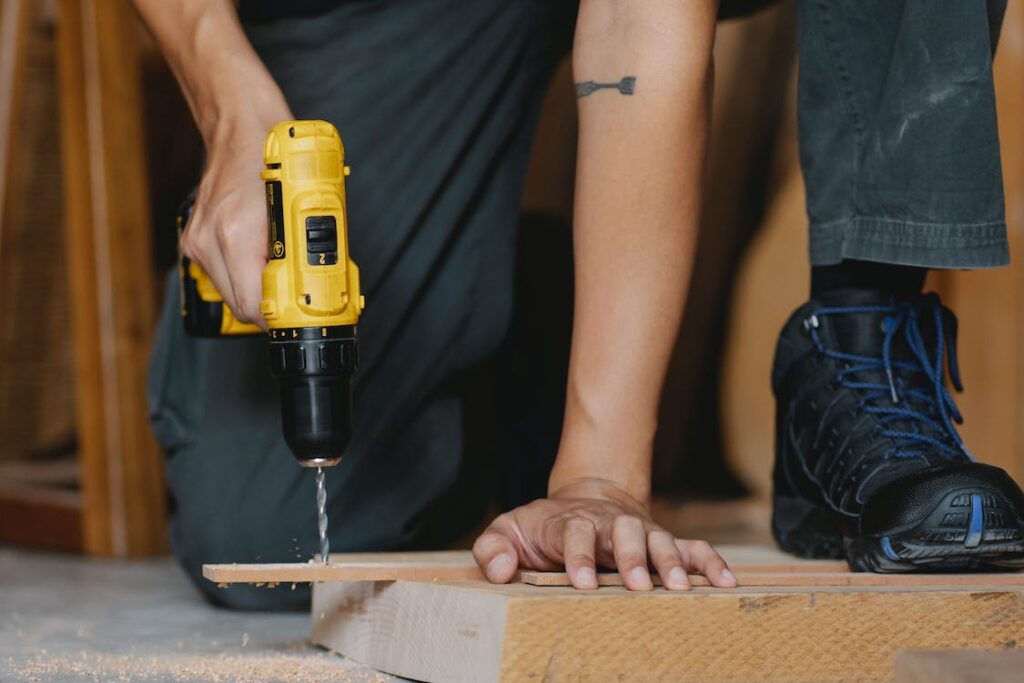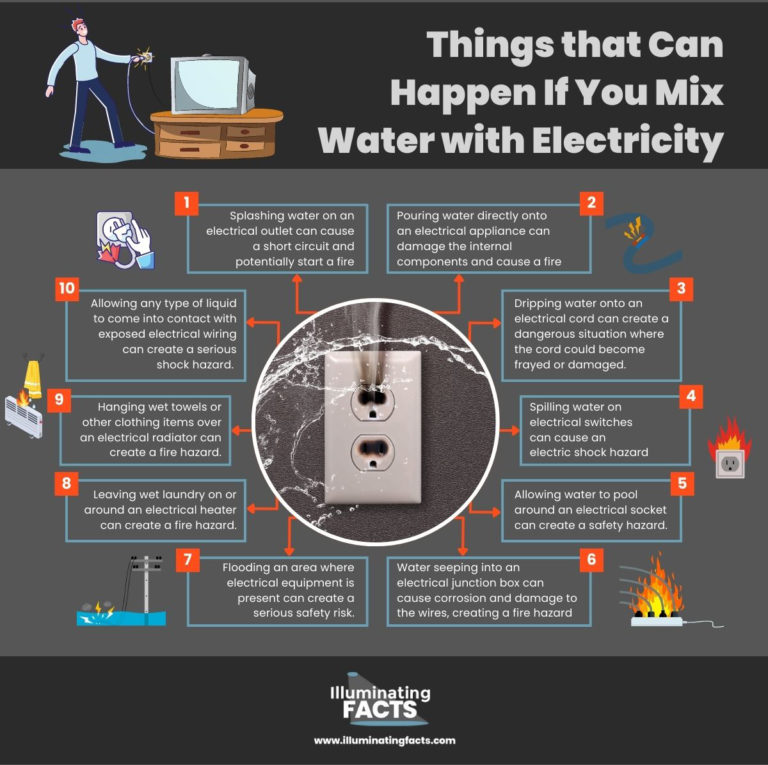If you’re someone who enjoys DIY projects or uses power drills for work, then you understand how important it is to have a drill that works well. Proper maintenance is the key to ensure that your power drill is functioning at its best, and will serve you for a long time.
In this blog post, we’ll provide you with all the essential information you need to know about maintaining your power drill, such as cleaning and lubrication, battery care, chuck and cord maintenance, motor maintenance, proper storage and transportation, troubleshooting, and repair. Let’s dive into it and make sure your power drill is always ready for the next project
Importance of Maintaining Power Drills
It is common for people to underestimate the value of basic maintenance checks for their power tools, especially when the tools are new and functioning perfectly. This is a testament to the manufacturers who make tools that are reliable and durable. Nonetheless, to ensure that a drill continues to function effectively, it is essential for the owner to take care of it. By performing simple maintenance tasks, the drill can continue to deliver excellent results, which can save the owner from having to spend more money on a replacement, which could have been easily prevented.
Power Drill Cleaning Practices
Power drills should be cleaned at the end of every shift and before they are stored away for the night. Here are few of the most common and efficient ways to clean your power drills:
- Using a shop vacuum to clean a power drill can be an effective way to remove debris and extend the life of the power drill.
- You can also use soft microfiber cloth and gently wipe away any dirt or debris.
- For more stubborn grime or residue, a damp cloth or a mild soap and water solution can be used to gently clean the surfaces of the drill.
Lubrication Guidelines For Different Power Drill Parts
If you want to keep your drill in top condition, it’s important to lubricate it properly. When you’re drilling through glass, water is the way to go – it’ll keep the glass and drill cooler. But when it comes to oiling the chuck that holds the drill bits, make sure to only use the lubricant the manufacturer has recommended, which can vary from light machine oil to specialized oils.
Proper Battery Storage
Proper battery storage is essential for maintaining the performance and lifespan of cordless power drill batteries. It’s important to store batteries in a cool, dry place, away from extreme temperatures and humidity
Charging And Discharging The Battery
To get the most out of your power drill battery, remember to:
- Charge the battery fully before using the drill for the first time
- Always use the charger that comes with the drill or the ones recommended by the manufacturer
- Avoid overcharging the battery
- Recharge the battery before it’s fully depleted
- Store the battery in a cool, dry place when not in use.
Signs Of A Faulty Battery
Signs of a faulty power drill battery include failure to charge or operate properly, low voltage readings on a multimeter and reduced runtime, Careful handling and necessary precautions are crucial when dealing with faulty power drill batteries.
Chuck Maintenance
A chuck is like a clamp that keeps the bit in place while you’re drilling. The shank of the bit fits into the chuck and it helps keep everything centered and working smoothly. It’s a pretty important part of the drilling setup.
To clean your power drill’s chuck, blow compressed air from the top to eliminate any solvent residue. Apply a few layers of quick-drying lubricant while opening and closing the jaws before reinstalling the chuck onto the power drill. Once done, close the jaws and clean the exterior of the jaws. Finish by blowing them dry with an air hose.
Chuck Replacement and Repair
To replace a chuck, first determine its type by consulting the manual or researching online. Chucks can be of different types, such as keyed or keyless. To remove the old chuck, utilize a chuck removal tool or a wrench to loosen it from the spindle of the tool. If it’s a keyed chuck, use the chuck key to loosen it. Once loose, the chuck can be removed from the tool. Next, place the new chuck onto the tool’s spindle and securely tighten it using a chuck removal tool or a wrench. If it’s a keyed chuck, use the chuck key to tighten it. Finally, ensure that the new chuck is firmly attached to the tool and test it to confirm that it’s operating correctly.
Cord Maintenance
Inspection Of the Cord For Wear And Tear
When using power drills, inspect the cord for any wear and tear. Look out for kinks, twists, or knots that could damage the wires and check the insulation for cuts or cracks that could expose them.
Repairing Or Replacing Damaged Cords
Make sure the cord is securely attached to the drill and check the plug for any damage too. If you find any damage or wear, get it repaired or replaced before using the drill. Keep the cord away from heat and sharp objects and avoid using it in wet or damp conditions.
Proper Storage Of The Cord
To prevent damage to the insulation and potential electric shock, it’s important to keep power cords away from heat, oil, sharp edges, moving parts, and water to prevent electricity from sparking. Additionally, make sure that tools such as cutting tools and drill bits are kept in good condition by being regularly cleaned, and maintained.
Motor Maintenance
Explanation Of The Motor And Its Importance
A drill motor drives a drill bit to create holes. It comes in two types, battery-powered or corded. The motor is the most crucial component as it converts electrical energy into mechanical energy to rotate the drill bit. A well-maintained motor is important for efficient functioning, and having a reliable motor is essential for optimal performance.
Signs of Wear And Tear
Signs of motor wear and tear in a power drill include overheating, unusual noises, reduced power, and a burning smell. It’s essential to repair or replace the motor immediately to avoid further damage or injury. Regular maintenance can help extend the motor’s life and ensure optimal performance.
Lubrication and Cleaning
Proper lubrication and cleaning of a power drill’s motor are crucial for safe and efficient operation. Follow the manufacturer’s instructions for lubrication and start with a small amount of recommended lubricant to the motor bearings and other moving parts. Clean the motor with a soft brush, a damp cloth or compressed air while the drill is unplugged and cooled down, and avoid using liquids. Regular maintenance can prevent overheating and wear, prolong the drill’s lifespan, and prevent costly repairs.
Storage and Transport
Importance Of Proper Storage And Transport
The proper storage and transport of power tools is crucial for their longevity and functionality. During relocation, it’s important to choose a safe and secure location for storing your tools. A storage unit is an ideal option, but it’s better to look for one with good security features and enough room for all your power tools.
Recommended Storage practices
Proper storage practices are essential for keeping your power drills safe and in good condition. If you don’t have enough space in your home or garage, you can consider renting a storage unit. When storing your power drills, it’s important to clean them after each use and let them dry completely before storing. Use plastic bins to provide an extra layer of protection and keep like-sized drills organized together. Labeling the boxes and keeping an inventory list of drills will make it easier for you to find what you need. Additionally, it’s important to store your drills in a dry place to prevent rust and corrosion.
Tips For Safe And Efficient Transportation
For safe and efficient transportation of your power drill, remove the drill bit before packing to prevent damage or injury. Use the original case or a sturdy container for transport and wrap the drill in a bubble wrap or foam for added protection. Secure the drill and accessories inside the container with packing material to prevent movement during transport. Lastly, label the container as “Fragile” and “Power Drill” for careful handling.
Troubleshooting and Repairs
Common Problems With Power Tools
Common problems with power drills include overheating, overloading, and slipping gears. Overheating can occur when the drill is used for an extended period of time in a poorly ventilated area, which can damage the motor or even cause a fire. Overloading happens when the drill is used for tasks beyond its capabilities, such as drilling through a concrete, which can damage the drill and cause it to overheat. Slipping gears can occur when the gears become worn out and no longer fit together properly, causing the drill to stop working altogether.
Basic Troubleshooting Tips
- Reduce pressure towards the end of the hole to avoid binding and snapping the drill bit.
- Use a jobber drill with wider flutes or withdraw the drill regularly to clear any chips out.
- Use a drill bit with three flats on the shaft for better grip if the drill bit is slipping.
- Increase the force/pressure, sharpen or replace the drill bit, or adjust the point style or jobber drill used if chips are not breaking up.
- Be careful when handling the drill and sharpen it regularly to avoid damage to the point angle.
- Dot-punch or drill a pilot hole to keep the drill bit central for oversized holes.
- Use the right point grind, reduce the feed, and use sufficient coolant to avoid rough edges.
- Ensure there is enough coolant, review the speed and feed, and use the right drill for the task at hand.
- Reduce the speed, apply coolant, or use a cobalt or carbide-tipped drill bit if you encounter overheating or burning smell.
When To Seek Professional Repair Services
If your power drill is experiencing reduced performance, strange noises, overheating, smoking or sparking, or has visibly worn or damaged parts, it’s important to have it repaired by a professional. Attempting to repair a power drill yourself can be time-consuming and costly, and you risk causing more damage to the tool. By hiring an experienced repair technician, you can save time and money while ensuring that the repair is done correctly the first time.
Conclusion
It’s important to take care of your power drills to make sure they work well and last a long time. You want to make sure you’re doing things like cleaning and lubricating the drill, as well as maintaining the battery and motor. It’s also a good idea to regularly inspect the tool and store it properly when you’re not using it. By doing all of this, you’ll save time and money in the long run, and avoid potential issues before they become bigger problems.
Don’t forget to follow the recommended guidelines and troubleshoot any problems that might come up – don’t hesitate to seek professional help if you need it. All of these maintenance practices will ensure that you can use your power drill safely and effectively for years to come. You might also want to have a look at our guide on how to choose the right power drill, which can help you choose the right power drill in the first place.




